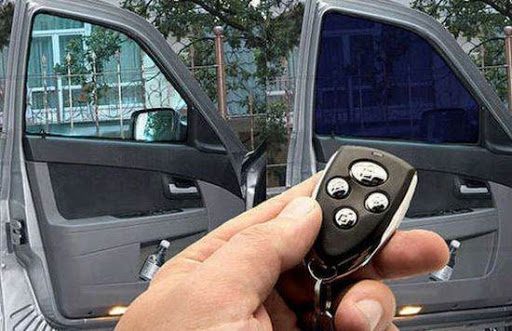
Types and principle of operation of electronic glass tinting
Content
Window tinting helps not only to improve the appearance of the car, but also to protect against ultraviolet rays. Conventional film is inexpensive, available to customers, and easy to install. But it has a significant disadvantage, or, more precisely, a limitation: it is necessary to comply with the requirements for the level of dimming. Windshield and front side windows must transmit from 70% of sunlight, this is the requirement of GOST. At the same time, an alternative solution is presented on the market - electronic tinting, which will be discussed later in the article.
What is electronic tinting
Electronic tinting refers to adjustable tinting. That is, the driver can choose the level of window shading himself. This was achieved through the use of special crystals. They are located between two layers of a film that is applied to the glass surface. Voltage is applied to the glass. Under the influence of a magnetic field, the crystals line up in a certain order, changing the level of light transmission. For adjustment, a special control panel is used or the regulator is built into the dashboard. Some modern cars are already equipped with "smart" tinting at the factory.
Electronic tinting is allowed in Russia. At least there is no prohibition or law on this. The main thing is that the transparency level of the glass is at least 70%.
Operating principle
A voltage of 12V is supplied to the electronically tinted glass. When the ignition is off and no current flows, the glass remains opaque and weakly transmits sunlight. Crystals are in a chaotic order. As soon as voltage is applied, the crystal structure is arranged in a certain order, becoming transparent. The higher the voltage, the more transparent the glass. So the driver can set any level of dimming or completely disable the option.
Types of electronic tinting
Electronic tinting is a rather complex development. Unfortunately, Russia and the CIS countries have not yet mastered this technology, so this option can be installed abroad or on request. Of course, this affects the cost and not everyone can afford it.
Now the following technologies for the production of smart glass can be distinguished:
- PDLC (Polymer Dispersed Liquid Crystal Devices) or polymer liquid crystal layer.
- SPD (Suspended Particle Devices) or suspended particle device.
- Electrochromic or electrochemical layer.
- Vario Plus Sky.
PDLC technology
Smart glass based on PDLC or LCD technology is based on the use of liquid crystals that interact with a liquid polymer material. This technology was developed by South Korea.
As a result of stress, the polymer can change from a liquid to a solid state. In this case, the crystals do not react with the polymer, forming inclusions or droplets. This is how the properties of smart glass change.
PDLC glasses are made using the “sandwich” principle. Liquid crystals and polymer are sandwiched between two layers of glass.
The voltage is applied through a transparent material. When a voltage is applied between the two electrodes, an electric field is generated on the glass. It forces the liquid crystals to align. The light starts to pass through the crystals, which makes the glass more transparent. The higher the voltage, the more crystals align. PDLC film consumes 4 ÷ 5 W / m2.
There are three color options for the film:
- milky blue;
- milky white;
- milky gray.
The method of making PDLC film is also called the triplexing method. Such glass requires special attention and special care. Do not use aggressive cleaning liquids, and excessive pressure on the glass can cause a delamination effect.
SPD technology
A thin film contains rod-like particles suspended in a liquid. The film can also be sandwiched between two panes or attached to a surface. Without electricity, glass is dark and opaque. The stress evens out the particles by letting in sunlight. The SPD smart glass can quickly switch to different light modes, providing fairly accurate control of transmitted light and heat.
Electrochromic film
Electrochromic tinting also changes the transparency of the glass after voltage is applied, but there are several features. This technology uses a special chemical composition that acts as a catalyst. In other words, the coating responds to changes in ambient temperature and to the level of light.
Voltage is only needed to change the transparency level. After that, the state is fixed and does not change. Darkening occurs along the edges, gradually moving to the rest of the glass. Opacity changes are not instantaneous.
A distinctive feature is that even in a darkened state, good visibility from the vehicle interior is maintained. This technology is used not only in cars, but also in other areas, for example, in art galleries and museums. Glass protects the valuable exhibit from the sun's rays, and the audience can freely admire it.
Vario Plus Sky tinting
Vario Plus Sky is an exclusive smart glass technology from the American AGP company. The technology is multilayer, which has a number of differences.
The Vario Plus Sky provides up to 96% protection against sunlight while maintaining sufficient visibility. The strength of the glass is also increased, it can withstand a pressure of 800J. Ordinary glass breaks at 200J. Thanks to the multilayer structure, the thickness and weight of the glass are increased by almost 1,5 times. Management takes place through a key fob.
Advantages and disadvantages
Among the significant advantages are the following:
- the driver himself, at will, can set any transparency of the windshield and side windows;
- high level of protection against ultraviolet light (up to 96%);
- the use of smart glass allows you to significantly save on the operation of the air conditioner and other climatic devices;
- laminated windows increase noise insulation and impact resistance.
But there are also disadvantages:
- high price;
- it is impossible to install "smart" glass yourself, it can only be done by a competent specialist with the availability of equipment;
- some types of film require constant voltage to maintain transparency. This consumes battery power;
- no Russian production, limited supply on the market.
Smart tinting technology is not yet as widespread in Russia and the CIS countries as in Europe or the USA. This market is just beginning to develop. The price for such an option is not small, but in return the driver gets increased comfort. Electrotoning perfectly absorbs sunlight, while not interfering with the view. A comfortable temperature is created in the cabin. This is a real miracle of modern technology that makes an impression.

